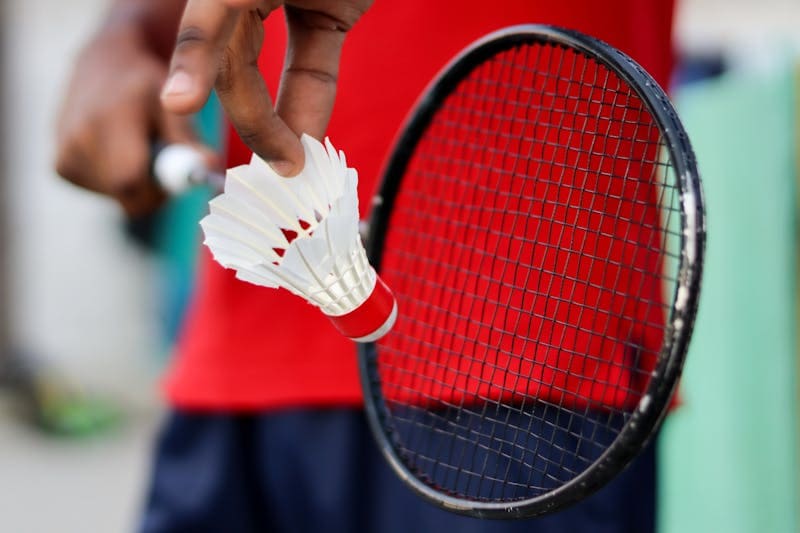Analyzing the Badminton Racket Sweet Spot
A badminton player’s performance may depend on many variables, however, professionals have noted that almost all players are not utilizing their full capacities due to the ‘badminton racket sweet spot’. When a shuttlecock is struck within this region which is situated on a badminton racket’s string bed, everything — power, control and sound — cohesively falls into place. If a player understands how to pinpoint and strike this sweet spot of a badminton racket consistently enough, a tremendous increase in the performance levels occurs.
What You Mean with Sweet spot of Badminton Racket?
On the strings of the badminton racket, there is a sweet spot area that enables the player to strike the shuttlecock more efficiently. This spot on the strings termed as the sweet spot of badminton racket moves with the center of its mass while providing a smoother contact further adding to the hitting efficiency which keeps the player feeling more confident. Players will be able to register the following sensations when a shuttlecock contact is achieved over this specific area:
- Maximum Energy Transfer: The shot was great since it was strikingly fast and incredibly lengthy.
- Best Quality of Contact Sound: A satisfying or an intriguing noise was emitted from the racket which gives satisfaction or respect to the hit.
- Less Hand Shock: Less vibration means less transmitted shock to the player’s hand.
Usually, this sweet spot is found above the center of the head of the racket. Most of the time, this has been found in the upper third of the string bed. Depending on the shape and design of the racket used, this specific area can slightly change.

Traits of a Badminton Racket with large Sweet Spot
Utilizing a badminton racket with large sweet spot can prove advantageous, especially to novice players or those who only play on an occasional basis. Here are a few factors you need to remember:
- Isometric Head Shape: Conventional oval rackets have a smaller sweet spot compared to isometric head rackets that have an isometric design. As a result, this type of shape reduces the chances of missing an off center hit.
- Material and Technology: In the modern era, various materials and technologies are available that can increase the amount or effectiveness of the sweet spot. Some rackets are made to only aim for that specific area.
- String Tension: This will also allow for off-center strikes to still slightly remain effective sweet spots.

How to know Sweet Spot of a Badminton Racket?
In order to fully understand how to know sweet spot of a badminton racket, one must do the following:
- Visual Inspection: Examine your racket for any details or constructions that may suggest the probable location of the sweet spot. Most times, it is slightly above the center of the strings.
- Sound Test: Strike shuttlecock all over your racket and pay attention to the various spots. The sweet spot will have a high pitch, penetrating, and crisp sound whereas, other spots will have an echoing sound.
- Self-perception: You might have less vibrations in your hand, when you strike the shuttle on a sweet spot. And vice versa, if the hitting is done off the sweet spot then the handle starts to shock in more vibrations.
- Practice Practiced: Work Energy Shots focusing that area, in the beginning level the understanding will develop with time.

Exercises to increase the probabilities of striking on the Badminton Racket Sweet Spot
In order to improve their chances of hitting the badminton racket sweet spot, players should try these drills during their practice sessions.
- Tennis Wall Mounting Drills: Grapple a shuttle cock to throw against a wall and as it rebounds shoot with your racket on the sweet spot.
- Pair Drills: Take a shot with a friend and concentrate only on hitting it back and forth aiming at contact point hitting.
- Leverage on Shadow Swings: Nobody watches a shuttlecock, rather casts a stroke imagining that the stroke’s hitting area will be a sweet spot, so that the muscle memory can develop.
- Feedback Mechanism: Try using devices or applications when a hit is correct, an audio response should be given and that would work as feedback in learning.
Does the weight of the badminton racket influence the sweet spot?
Yes, it is true that the weight of the racket affects the sweet spot. The weight of rackets on the average range facilitates more power, as energy is efficiently stored and transferred during the swing, thereby boosting the performance of the racket when it strikes the sweet spot. On the other hand, a heavier racket may also result in reduced maneuverability and control, making it more difficult for a player to repeatedly hit the sweet spot thus hindering the performance of the player especially beginners.
However, less heavier rackets are quite easy to move and make adjustments to locate the sweet spot. Thus, in games played competitively, the racket should be of a weight that creates the highest chance if the sweet spot is struck as the chances depend mostly on the player’s skills and techniques.
How does the sweet spot location vary between head-heavy and head-light rackets?
Such differences in mass distribution and balance explain the varying locations of the sweet spot on head heavy racks and head light racks, which are just the total opposite from each other.

1. Sweet spot of Head-heavy Rackets
The construction brush is surely head heavy as weight is concentrated on the peripheral frame. The sweet spot on the racket face tends to be higher up, around the upper one-third area, because of this. The top-weighted rackets allow the player to strike the shuttle with a high amount of force, making power shots and clear shots relatively effortless. But this can make the racket feel less controllable which can make it hard for the player to consistently hit the sweet-spot location in rapid exchanges or defensive situations.
2. Sweet Spot Location in Head-light Rackets
On the other hand, head-light rackets have a weight distribution that is more even or focused towards the bottom of the grip. This balance allows players’ response time to be quick as they adjust for a delicate shot. The sweet spot in people employing the head-light rackets are noticeably lower on the Racket face than those employing head heavy rackets. Even though these rackets do not seem to deliver such force during the impact, they do assist the players in placing the racquets right where they need during the fast sequences of the rallies.
By and large, the understanding of the sweet spot’s location for the head-heavy and head-light rackets will enable the player’s to make an informed equipment choice according to their game strategy. It seems reasonable to assume that in case of two players the second one who strives for power would select a head heavy racket and the first one who prefers speed and control would select head light.
How does the sweet spot location impact control and accuracy?
Sweet spot of a badminton racket refers to a certain place on the racket and centralizes the control and efficiency of the racket during proper execution terms. Here is what this entails:
Influence on Control
- Vibration reduction to the minimum: The majority of vibrations on the racket, when the shuttlecock is contacted exactly at the sweet spot, are reduced and transferred through the racket and into the hand of the player. As a result of this energy transfer, the shot feels firm, allowing players to feel better and retain their grip.
- Consistency in Shot Execution: Players who constantly make contact with a sweet spot on the racket can reproduce each of their shots quite easily. This fidelity matters in control throughout rallying situations because, after the contact, players can easily tell how the shuttle cock would behave.
- Improved Maneuverability: With the sweet spot clearly located in most rackets and these geared such into the design, such rackets would automatically increase the agility of most strokes. Players would be able to enhance their swings while still in control during fast action situations.
Influence on Accuracy
- Easier Shotshaping: Players are able to apply more energy directed solely at the shuttlecock because it was contacted at the sweet spot. This contact leads to a more precise transfer and makes hits more accurate because players can aim their hits precisely, increasing efficiency for each hit while being effortless.
- Trajectory Control: The throw of the shuttlecock is influenced by the position of the sweet spot. Ideal circumstances are created with this plane, as players can hit the shuttle on the required angles and heights to make it easier to target areas beyond the net, or parts of the lower zones of the court.
- Decrease in Off-Center Hits: The tendency to strike out of the center and thus off target areas is significantly reduced as players are able to concentrate on sweet spot and so such a shot placement becomes unproductive. This is also the case as players manage to hit this area with a degree of consistency which develops as their focus on such a target increases.
Table: Comparison of Badminton Racket Sweet Spot Characteristics and Racket Types
| Racket Type | Weight Distribution | Sweet Spot Location | Impact on Control | Impact on Accuracy |
|---|---|---|---|---|
| Head-Heavy Racket | More weight at the head | Higher on the racket face | Increased power, less maneuverability | Direct energy transfer, higher shot trajectory |
| Head-Light Racket | More weight at the handle | Lower on the racket face | Enhanced maneuverability, quicker reactions | Improved precision, better shot placement |
Must Read,
✔️ Rajiv Gandhi International Cricket Stadium, Hyderabad
✔️ How to Do Medical PG in Germany After MBBS in India?
Conclusion
To understand the mechanics behind the badminton racket sweet spot will greatly help in improving your game. After knowing where the ideal place is, selecting the right tools to use and practicing regularly, players are guaranteed enhanced levels of accuracy and power during play. Whether you get a badminton racket with large sweet spot and concentrate on improving the techniques or otherwise, targeting that important part will improve your overall match performance.









